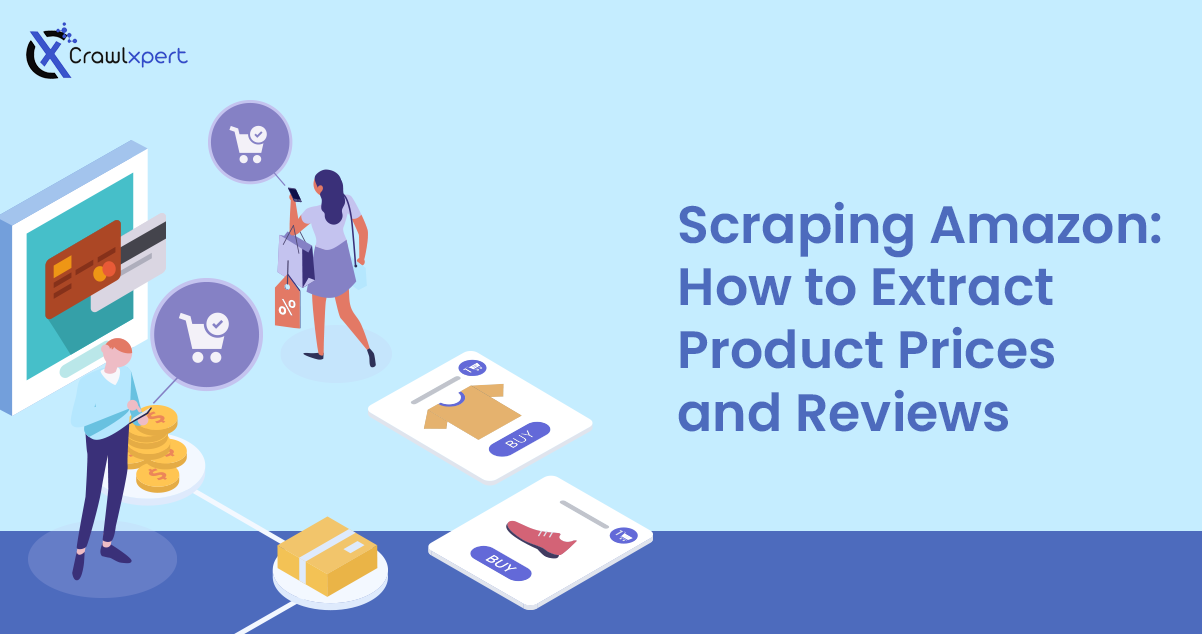
Scraping Amazon: How to Extract Product Prices and Reviews
Apr 14, 2025
Introduction
Amazon is among the largest e-commerce platforms globally, with millions of products listed in numerous categories. Businesses, data analysts, and researchers can gain insight into pricing strategies, consumer sentiments, and market trends by extracting product prices and customer reviews from Amazon; however, there are some difficulties regarding the scraping of Amazon such as anti-bot measures and legal restrictions.
In this blog, we will explore:
- The importance of extracting Amazon product prices and reviews
- Tools and techniques for web scraping
- Challenges and solutions for overcoming scraping restrictions
- Ethical and legal considerations
- How to analyze and utilize scraped data effectively
Why Scrape Amazon Data?
Extracting Amazon data can be useful for multiple purposes, including:
1. Price Normalization and Price Comparison
Competitors' price activities may be observed to configure the appropriate price tag competition. The e-commerce seller has to have continuous monitoring or monitor price variation so that he or she remains at the top in this competition and can benefit from sales and revenues.
2. Market and Trend Analysis
Scraping Amazon would open those functions that are necessary for trend analysis and preference analysis of customer products. That means which products currently stay on the top list of best sellers and which ones have begun to lose their sale are useful considerations in determining the best strategies for future inventory and marketing.
3. Customer Sentiment Analysis
Reviews can be leveraged by businesses to measure customer sentiment and fine-tune their product offering. A breakdown of positive and negative feedback may yield insights as to where a product stands strong and weak so that businesses will refine and develop their proven offerings and customer service.
4. Evaluation of Products on Performance
Using the number of reviews, star rating of the stars, and feedback from consumers, it is a possibility for businesses to measure the demand and quality of that product. A good number of ratings with positive reviews show that customers are satisfied. On the contrary, negative reviews indicate the area that requires improvement.
5. Outcome of Data-Driven Decision Making
Retailers and marketers will make decisions on their strategic profiles using this data from Amazon: price strategy adjustments, new product additions, and improvements of existing offers.
Tools and Technologies for Scraping Amazon
1. Python Libraries
- BeautifulSoup: A library for parsing static HTML content and extracting data.
- Selenium: A browser automation tool for scraping dynamically loaded content.
- Scrapy: A powerful framework for large-scale web scraping and data extraction.
- Requests: A simple library for making HTTP requests and retrieving HTML content from web pages.
2. Browser Developer Tools
- Inspect page elements, analyze API calls, and understand data structures using Chrome DevTools.
3. Headless Browsers
- Used with Selenium to simulate human browsing behavior and extract dynamically loaded content.
4. Rotating Proxies and User Agents
- Essential for bypassing Amazon’s bot detection mechanisms by mimicking real user behavior.
Methodology for Scraping Amazon Prices and Reviews
1. Identifying Target URLs
Each product page on Amazon has a structured URL format, which can be used to extract relevant data. Understanding these URL patterns helps in automating data collection.
2. Inspecting HTML and API Requests
Amazon loads product details dynamically, requiring analysis of the HTML structure and API endpoints. Using the Network tab in Chrome DevTools, one can analyze how data is retrieved and structured.
3. Writing a Web Scraper
Here’s an example Python script using BeautifulSoup to scrape product prices and reviews:
import requests
from bs4 import BeautifulSoup
headers = {"User-Agent": "Mozilla/5.0"}
url = "https://www.amazon.com/dp/B09G3HRMVB"
response = requests.get(url, headers=headers)
if response.status_code == 200:
soup = BeautifulSoup(response.text, 'html.parser')
title = soup.find('span', {'id': 'productTitle'}).text.strip()
price = soup.find('span', {'class': 'a-price-whole'}).text.strip()
print(f"Product: {title}\nPrice: ${price}")
else:
print("Failed to fetch data")
4. Scraping Customer Reviews
Amazon reviews are often paginated. Below is an example script to extract reviews:
reviews_url = "https://www.amazon.com/product-reviews/B09G3HRMVB"
response = requests.get(reviews_url, headers=headers)
if response.status_code == 200:
soup = BeautifulSoup(response.text, 'html.parser')
reviews = soup.find_all('span', {'data-hook': 'review-body'})
for review in reviews:
print(review.text.strip())
Challenges and Solutions in Scraping Amazon
1. IP Blocking and Rate Limiting
- Solution: Use rotating proxies, VPNs, and set delays between requests to avoid detection.
2. CAPTCHA Protection
- Solution: Implement headless browsers like Selenium with human-like browsing behavior, including random mouse movements and pauses.
3. Dynamic Content Loading
- Solution: Use Selenium or Puppeteer to extract dynamically loaded elements, especially for prices and reviews.
4. Legal Restrictions
- Solution: Always comply with Amazon’s Terms of Service, consider using the official Amazon API where possible, and ensure responsible data collection.
Ethical and Legal Considerations
Scraping Amazon can violate its Terms of Service, potentially leading to legal consequences. Businesses should:
- Use official APIs whenever possible.
- Avoid aggressive scraping that disrupts Amazon’s services.
- Respect robots.txt directives and follow ethical web scraping practices.
Analyzing and Utilizing Scraped Data
1. Price Trend Analysis
Extracted pricing data can be used to analyze trends over time and optimize pricing strategies for better competitiveness.
2. Sentiment Analysis on Reviews
Using NLP techniques, businesses can extract sentiment scores from reviews to understand customer feedback, enabling better decision-making for product improvements.
3. Competitive Intelligence
Monitor competitors’ product reviews, pricing strategies, and customer feedback to stay ahead in the market.
4. Forecasting Demand and Inventory Management
Analyzing historical pricing and review trends can help businesses forecast demand and optimize inventory management strategies.
Conclusion
Scraping Amazon for product prices and reviews gives emerging insights to businesses and researchers, which help them in deciding about pricing, product development, and customer satisfaction. However, because of Amazon's strong anti-scraping policies, the implementation of an effective and legal scraping strategy is a must.
With the aid of advanced web scraping tools, ethical practices, and data analysis techniques, businesses can very well extract and analyze Amazon data. CrawlXpert offers expert web scraping services to help businesses collect e-commerce data in a legal and acceptable way that helping their position in the market.

